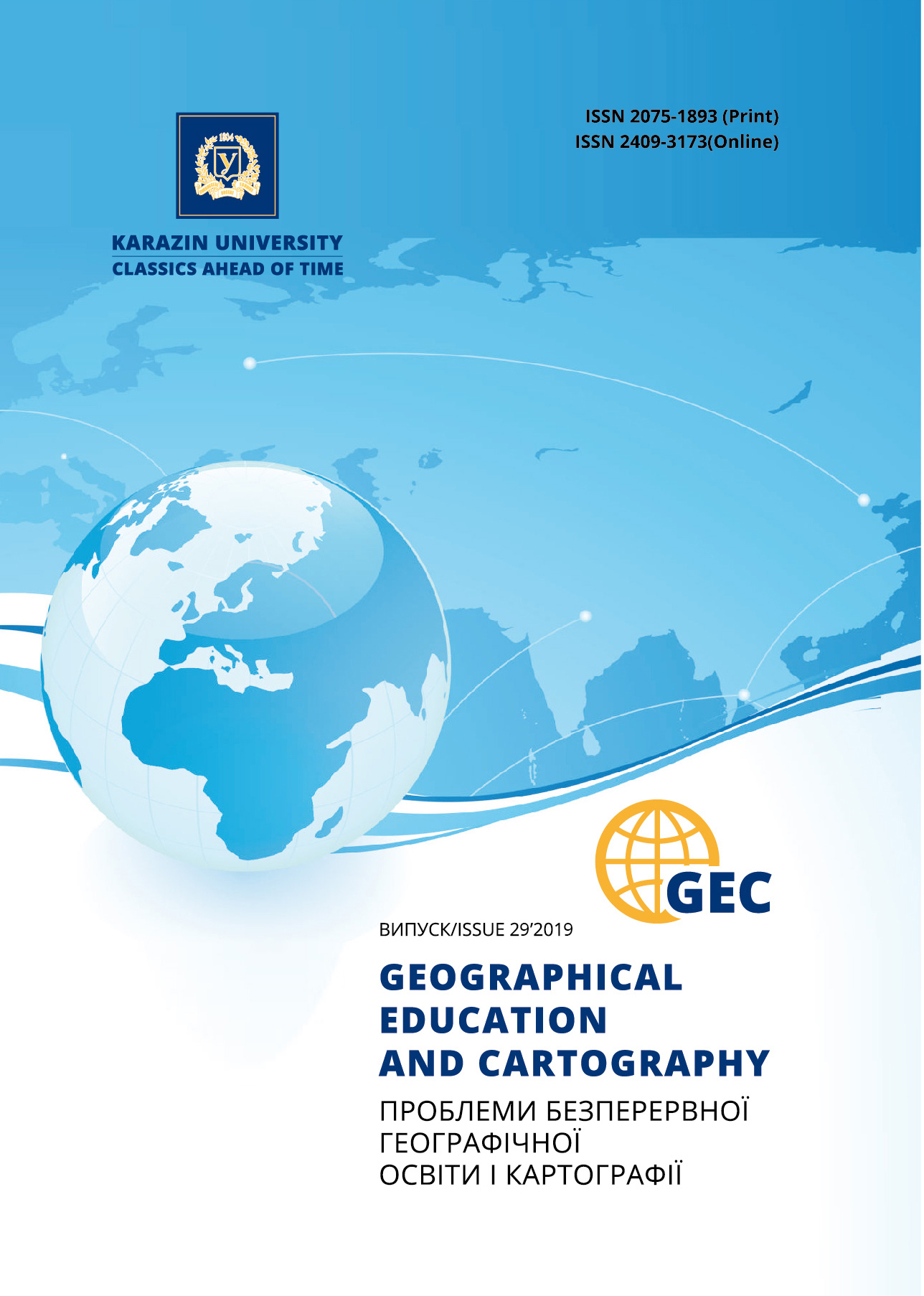Landscape-ecological studies of ecosystems with modern methods
Abstract
Formulation of the problem. The article briefly describes the main problems that arise during landscape and ecological research of territories. On the example of the arboretum of V.V. Dokuchaiv Kharkiv National Agrarian University it considers the possibilities and main advantages of applying mapping modelling methods for visual analysis of the object’s territory. Modern software products, digital analytical methods allow us to use diverse reasonable approaches to the solution to the issues of organization of territories, monitoring of their state and implementation of necessary measures. The collection, systematization, analysis and processing of high-quality reliable information as a result of complex mathematical analysis of territories, and the forecasting of environmental problems and ways to their solution or prevention is the main goal of developing such methods for solving problems of optimal territory organization of objects of natural and agricultural character.
The purpose of this article: analysis of the landscape-ecological state of agroecosystems using the cartographic modelling and determination of perspective directions of his recovery.
Scientific novelty and practical significance. One of the main mechanisms in regulating the ecology of land resources is the identification, evaluation and implementation of the maximum possible reserves to increase the efficiency of this process. This is a reduction of unproductive losses in the mode of use and conservation of resources and the possibility of using the basic solution as a scientific and technological progress. Digital terrain models are designed for interactive visualization. They have an eff ect of presence on the ground. Such models are used to substantiate measures to optimize land use in order to restore and stabilize the ecological situation, assess the natural recreational potential of the territory, monitor the components of the environment, predict the development of transformation and degradation processes and environmental phenomena.
Conclusions. Modern software products, digital methods of analysis allow versatile and reasonable approach to the issues of organization of territories, monitoring their condition and taking the necessary measures. With the help of the constructed models and statistical data, the ecological state of the territory was studied and modern methods of restoration of disturbed areas were proposed.
Downloads
References
Kompleksnaja model’ dlja ocenki sostojanija global’noj okruzhajushhej sredy IMAGE 2.2 [Integrated model for assessing the state of the global environment IMAGE 2.2]. Available at: http://www.rivn.ni/image
Bondarenko, E.L. (2007). Geoinformacijne ekologo-geografichne kartografuvannya [Geoinformative ecological-geographical mapping]. Ky`yiv: Fitosociocentr, 272.
Ehlers, M., Edward, G., Bedard, Y. (1989). Integration of Remote Sensing with Geographic Information Systems: A Necessary Evolution. Photogrammetric Engineering and Remote Sensing, 55, 11.
Bobrowsky, P.T, ed. (2001). Geoenvironmental Mapping - Methods, Theory and Practice. Rotterdam: A.A. Balkema Publishers, 725.
Oosterom, P. (2013). Research and Development in 3D Cadastres. Environment and Urban Systems, 40, 1, 1-6.
Peresad`ko, V.A. (2009). Naukovi osnovy` regional`nogo ekologo-pry`rodooxoronnogo kartografuvannya.: avtoreferat dy`s. ... d-ra geogr. nauk. 11.00.12. [Scientific fundamentals of regional ecological and environmental mapping: Abstract dis. ... Dr. geogr. sciences. 11.00.12.]. Ky`yiv: Insty`tut geografiyi NAN Ukrayiny`, 40.
Peresad`ko, V.A. (2009). Kartografichne zabezpechennya ekologichny`x doslidzhen` i oxorony` pry`rody`: monograf, [Cartographic support for environmental research and conservation: Monograph]. Xarkiv: Xarkivs`ky`j nacional`ny`j universy`tet imeni V.N. Karazina, 242.
Chervan`ov, I.G. (2007) Modeli geody`namiky` rel`yefu v doslidzhennyax i rozrobkax Xarkivs`koyi geomorfologichnoyi shkoly` [Models of geodynamics of relief in researches and developments of the Kharkiv geomorphological school]. Geopolitics and Ecogeodynamics Regions, 3, 2, 39-44.
Peresad`ko, V.A. (2004). Kartografichni tvory` yak osnova stvorennya regional`noyi ekologo-geografichnoyi GIS [Cartographic works as the basis of creation of regional ecological-geographical GIS]. The Problems of Continuous Geographycal Education and Cartography, 4, 222-226.
Kravecz`, O.P. (2002). Suchasny`j stan ta problemy` fitoochy`shhennya g`runtiv vid radionuklidiv i vazhky`x metaliv [Current state and problems of soil phyto-purification from radionuclides and heavy metals]. Physiology and Biochemistry of the Cultural Plants, 34 (5), 377–386.





